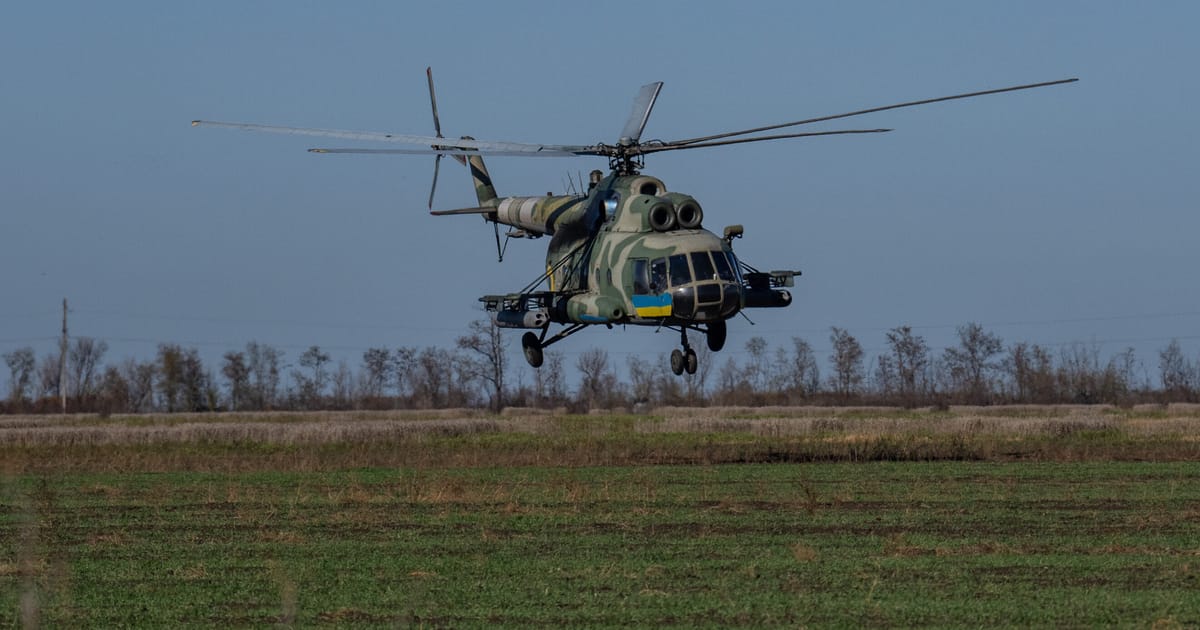Jamie Dettmer is opinion editor at POLITICO Europe.
Unveiling the hypersonic Kinzhal missile in 2018, Russian President Vladmir Putin had bragged it was almost impossible to intercept. But overnight Monday, Ukrainian commanders claimed to have shot down all half a dozen of the missiles tracking toward Kyiv. They also said Ukraine’s air defenses downed a dozen other missiles, as well as Iranian-made drones.
So, not that hard to detect after all.
Predictably, Moscow insisted all their missiles struck their intended targets — facilities storing ammunition, weapons and military equipment supplied by the West. But there’s no ground evidence to support this claim — although they did manage to hit a Patriot air-defense missile battery, with U.S. officials saying an assessment is now underway to see if the damage can be patched up quickly in situ.
Even if a Patriot system was mangled, however, at first glance the overall impact of all the missiles expended by Russia on Monday — as well as the strikes on the Ukrainian capital throughout the week — appears rather meager. So, is there more to it?
According to the Institute for the Study of War, Russia’s recent air strikes were likely “an effort to portray a proactive approach to growing concerns in the Russian information space regarding a Ukrainian counteroffensive.” And, indeed, Moscow was likely trying to demoralize Ukrainians with their barrage on the capital, while raising spirits in Russia. But it probably had wider aims than just that, with missile strikes elsewhere in Ukraine.
Indeed, at first glance, many of Russia’s recent strikes do appear to be unselective and indiscriminate — as Ukraine claims. But peering through the fog of war, aside from just intimidating and hurting the civilian population in a bid to undermine Ukraine’s fighting spirit, these missile strikes do seem to have more purpose.
According to Western analysts, Russian commanders — much like their Ukrainian counterparts — are trying to upend their foe. In Kyiv, Russia appears to have been seeking to test air-defense systems, regardless of the danger to civilians. And elsewhere, they are hoping to disrupt supply lines and hit logistical hubs ahead of an expected Ukrainian counteroffensive.
Take, for example, a Russian strike on Pavlohrad, 100 kilometers from the front lines, earlier this month. Ukrainian authorities highlighted the damage to 44 apartment blocks and private houses, six schools and five shops, which caught media attention — as it should. But an industrial site, likely a logistical hub, was also hit, triggering a massive blaze.
Conversely, Ukraine has pulled off some smarting precision strikes, targeting, for example, a huge Russian logistical and command hub, 80 kilometers or so from the front line in the occupied city of Luhansk, with two cruise missiles. And according to Artem Lisohor, the regional governor, one of the struck facilities was used for the repair and resupply of military vehicles. “Somehow, a machine-building factory caught fire; not hard to guess what the Russians were storing and repairing there,” he announced in a Telegram post.
But Russia’s strikes have become much more intense and widespread this month — and this comes after a noticeable lull in April, when Moscow was probably conserving its supplies to ready for the coming counteroffensive. Russia has shelled the northeastern Kharkiv region more than 140 times in the past few weeks, according to Oleg Sinegubov, the head of the regional state administration. And 24 of these were missile strikes, which have mainly targeted “civilian objects and the civilian population,” he added.
In the past week, there’s also been a significant uptick in Russia’s strikes in Mykolaiv, an important transport hub near the front lines in Zaporizhzhia and Kherson — either, or both, of which could figure in a southern push by Ukraine when its counteroffensive truly gets underway.
And when it comes to this week’s barrage on Kyiv, the attack was also significant in its intensity and range, as well as the variety of missiles and drones launched. Defense studies expert Marina Miron of King’s College, London suspects the aim wasn’t only to probe the capital’s defense system looking for weak spots, but also to force Ukraine to deplete its air-defense missile reserves.
Meanwhile, Britain’s defense ministry believes that “Russia has prioritised attempting to neutralise Ukraine’s improved air defense capabilities” — although the downing of the Kinzhal missiles would have come as a “surprise and an embarrassment” for the Russian president.
Nonetheless, Russia is trying everything it can to disrupt Ukraine’s buildup for a major counteroffensive, the focus of which may not yet be determined by Kyiv.
Where the main thrust will come from will largely depend on where Ukraine spots the biggest weakness. And as with the counteroffensive last year, when Ukraine surprised Russia with a push in the northeastern region of Kharkiv, even Ukrainian ground commanders may have no idea about their orders until just hours before.
Ukraine is, of course, hoping for a repeat of last year’s Kharkiv offensive, with another rapid and panicky flight by Russian infantry units. And an analysis published Friday by Britain’s Royal United Services Institute (RUSI) will give some basis to those hopes. Authored by Jack Watling and Nick Reynolds — experts in land warfare who have both previously conducted operational analysis for Ukraine’s General Staff — the report suggests Russian ground forces still suffer from “low morale” and poor training.
Furthermore, signs indicate the Russian military is facing an increasing shortage of shells, with the authors noting that “the total ammunition expenditure in 2022 was approximately 12 million rounds,” whereas this year the rate is “trending closer toward 7 million rounds and rates of fire are decreasing.” This is especially significant, as artillery remains at the heart of Russia’s military, and Russian fires continue to be the main effect shaping the fighting.”
All of this will be good news for Ukraine’s commanders — but the report contains warnings too.
According to the RUSI analysis, “engineering has proven to be one of the strongest branches of the Russian military. The defenses now constructed, consisting of complex obstacles and field fortifications, will pose a major tactical challenge to Ukrainian offensive operations.”
And the authors caution that “while there are a range of significant deficiencies in Russian capabilities, these are most pronounced in conducting offensive operations. The depth of the defenses mean that Ukraine must generate serious combat power in order to penetrate the Russian lines, with the extent of Russian defensive fortifications across the front making bypassing them near-impossible.”




